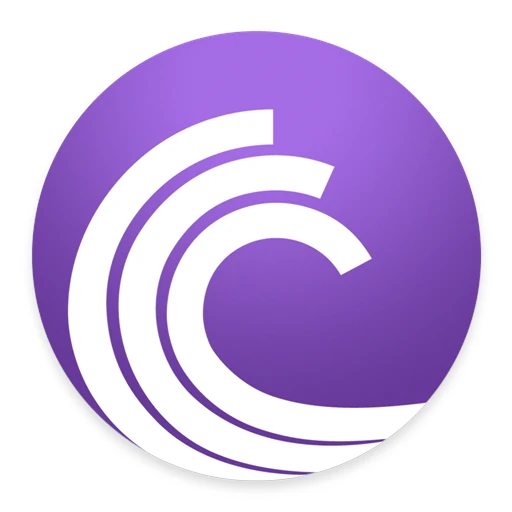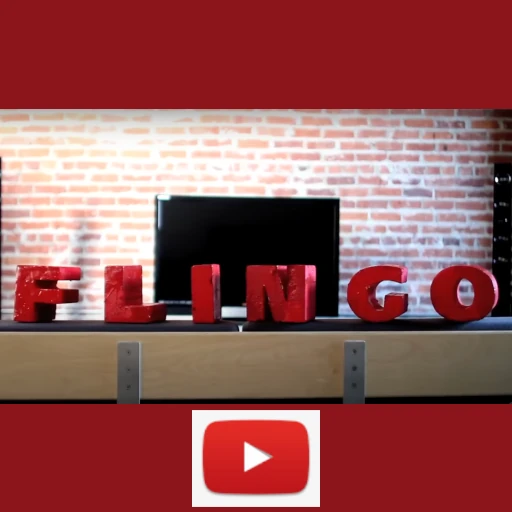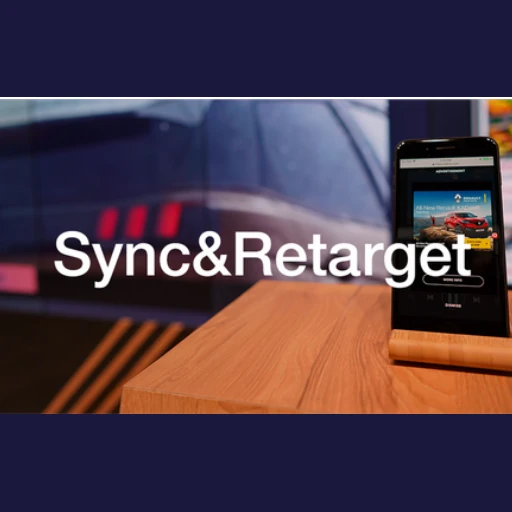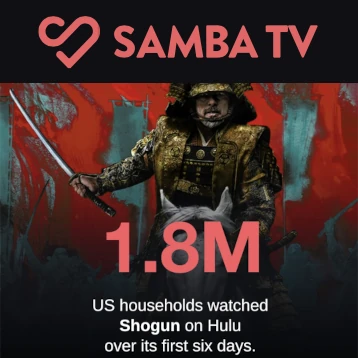
David A. Harrison
Assistant Professor of Computer and Information Science
207 Weir Hall
University of Mississippi
harrison@cs.olemiss.edu
Using artificial intelligence to create, data science to measure and inform, and networking to communicate.
Classes: Fall 2024
CSCI-632/492 Machine LearningTime: T Th 4:00-5:15 PM
Location: 235 Weir Hall
Office Hours: M 1:00 PM to 2:00, W 11:00 to noon
Affiliations
Machine Learning Media Lab
Machine learning applied to video, audio, and image processing problems.
Samba TV
I am the co-founder and CTO Emeritus of Samba TV, continuing as a company advisor. I served as CTO from its founding in 2008 until 2020. Samba TV is a Data as a Service (DaaS) and data analytics company, powering content recommendations for consumers and providing omni-screen advertising and measurement solutions to content distributors, media companies, and advertisers. Data consumers include Amazon AWS, Disney Advertising Sales, Google, Facebook, Hulu, X, Comscore, and Kantar. Investors include Time Warner Discovery, Disney, August Capital, and Mark Cuban. In 2017, Samba was ranked as the 56th Fastest Growing Private Company in the Inc. 5000 list. Samba made the list again in 2018.
History

Computer Networking
In the late 1990s and early 2000s, I worked in computer networking. For my master's degree, I worked on Online Simulation under Professors Shivkumar Kalyanaraman, Bolek Szymanski, and Ken Vastola. This project spawned Premonitia, Inc. with initial funding from Paul Severino, co-founder and chairman of Bay Networks.
For my doctorate, I continued under Shivkumar Kalyanaraman. I proposed using congestion control between network edge devices (e.g., to implement VPNs) as a building block for providing differentiated services .

BitTorrent Peer-to-Peer Streaming
I co-developed the BitTorrent Assisted Streaming System (BASS) in 2004-2005 and its successor, Kindling . To date, BASS is my most highly cited paper. Kindling became a foundational building block for BitTorrent's DNA Peer-to-Peer Content Delivery Network (CDN).
With BitTorrent DNA, the user streams video from within their web browser providing the exact same user experience as when streaming from any existing website. Initially, the web browser streams entirely from a server. Simultaneouly the web browser connects to peers and progressively transitions streaming load to the BitTorrent peer-to-peer network as the browser ramps up trading pieces of the video file with peers.

BitTorrent Open Source
Starting around 2005, I made many source code contributions to the BitTorrent Open Source Project. At the request of BitTorrent's inventor, Bram Cohen, I became founding co-editor of bittorrent.org alongside Arvid Norberg to oversee the BitTorrent standardization process. During my tenure, BitTorrent's popularity soared, resulting in its contribution growing to >30% of all Internet traffic by volume.
Hypertracker
In 2006, alongside Andrew Loewenstern, I developed the first distributed tracker for BitTorrent, which handled auto-updates for the entire installed base of tens of millions of BitTorrent clients worldwide. This operation encompassed the largest swarms ever encountered by the BitTorrent Open Source Client up to that time.

μTorrent
BitTorrent acquired μTorrent from Ludde Strigeus in late 2006, and my fellow BitTorrent colleague, Greg Hazel, took over as the architect of both the uTorrent and BitTorrent clients. I was tasked with adding the Fast Extension to μTorrent. However, my most significant contributions involved integrating BitTorrent Streaming (using Kindling) into μTorrent.
μTorrent eventually became the codebase for the mainline BitTorrent client, and to this day, μTorrent is the most popular BitTorrent client with over a hundred million installs of the Android version alone. Since it originated as a PC application, the true number of installs is vastly higher than this.
If you are wondering, yes, this is the same Ludde Strigeus who went on to create Spotify, and Greg Hazel who later founded OpenGarden, which created FireChat. Greg Hazel more recently became Chief Software Architect at FORA Capital.

Flingo
Before there was AirPlay, before there was Google ChromeCast, there was Fling. Fling enabled websites and mobile apps to "fling" video to a TV. I invented Fling in 2008. What distinguishes it from Airplay and Google ChromeCast is that it achieved this feat using only JavaScript, requiring no specific browser support and thus working on all web browsers. Fling was deployed in ALL Vizio televisions in the early 2010s.
Initially, websites had to integrate some JavaScript to support Fling. Through the use of a bookmarklet, the JavaScript was moved out of the webpage, enabling Fling to work with any website for which Flingo's backend had an adapter. This allowed Fling to work with YouTube, Crunchyroll, and others.
Fling inspired the name of the company, Flingo, I co-founded with Ashwin Navin, Alvir Navin, Todd Johnson, and Omar Zennadi in late 2008.
Flingo faced challenges distinguishing itself from Apple AirPlay and later Google ChromeCast, as those were backed by much larger companies. Despite this, neither AirPlay nor ChromeCast accomplishes flinging via only JavaScript. AirPlay and ChromeCast are tied to specific ecosystems, whereas Fling was not. Nevertheless, encouraging websites to embed JavaScript for Fling support, or alternatively persuading users to install a bookmarklet, led to the gradual decline of Flinging to TVs. Thus, we rebranded as Samba TV. However, this doesn't mean Fling completely disappeared; it evolved into a new monster known as Fling Fusion.

Samba Content ID
I developed the first production version of Samba's digital fingerprint algorithms, designed to operate within the limited resources available to TVs in 2010. At that time, no programming interfaces existed within TV chipsets to support such innovation. We negotiated interfaces with various chipset vendors and initially launched in Sanyo TVs using Zoran chipsets. We were the first to bring Automatic Content Recognition (ACR) to market. Today, these algorithms run in more than 20 television brands and millions of TVs worldwide.

Fling Fusion
Fling allowed us to fling video to TVs in the same network. Fling Fusion expanded this concept by enabling reverse interaction. Using the same JavaScript-based primitives, a web page or mobile app can discover and communicate with networked sensors gathering information to tailor content accordingly. For instance, a web page might query a nearby networked thermometer, detect a low temperature, and then highlight a coat store down the street. Similarly, a TV equipped with Automatic Content Recognition could inform a web page or mobile app about the currently airing show, enabling a companion experience.
At CES 2012, we showcased an iPad application that leveraged Fling Fusion to discover the TV within the booth, determine the content being watched, and then locate related hashtags on Twitter to join the conversation about a specific show. During this event, Mark Cuban wandered into our booth. Recognized by our co-founder Omar Zennadi, a swift introduction to our CEO Ashwin Navin led to a Shark-Tank-style pitch. Mark Cuban invested.
August Capital
In 2012, armed with the ACR-enabled Sanyo TV, we suddenly garnered interest from numerous venture capitalists. Ultimately, we selected August Capital, securing two of their partners as invaluable board members:
- David Marquardt, founding investor and board member of Microsoft
- Howard Hartenbaum, founding investor of Skype
Our series A funding round also included Mark Cuban and Lauder Partners.

Sync and Retarget
Fling Fusion not only enabled companion experiences for TV viewing but also played a pivotal role in ad targeting. By embedding some JavaScript on the web page, the web page could discover, query the TV to find out when each ad is airing, and then query our ad server for an appropriate ad. The ads appearing on a web page could even swap to maintain synchrony with the TV without a web page reload. This allowed sychrony between TV ads and mobile devices to within a few seconds. Synchronized Cross-Screen Advertising was born.
Retailer websites could further query the TV to ascertain recently aired ads and incorporate this data into their product recommendations. Demonstrations of synchronized ads and web retailer integrations were showcased at CES 2013.
The tight synchrony made for great eye candy but missed the chance to engage viewers after they had moved away from the TV. To address this, we expanded the targeting timeframe, allowing for the delivery of web or mobile ads linked to a TV ad seen minutes or even hours prior. We named this "Retarget." The synchronized version, we called "Sync."
Sync and Retarget represented significant value to advertisers in that TV ads can tell a memorable story but are not interactive, whereas web or mobile apps can be interactive. Web and mobile apps can link to a product, brand or retailer's web page, potentially leading into a sales funnel.
Unfortunately the first implementations of Sync and Retarget required integrating special JavaScript into web pages, posing a barrier to widescale adoption. To overcome this, we explored ways to incorporate Fling Fusion within the existing ad serving ecosystem. More importantly, we eliminated the need for special JavaScript built into web pages and instead integrated with Google Ad Exchange. This created massive scale.

Inc Magazine 5000
Our integration of Fling Fusion with real time bidders on Google Ad Exchange allowed us to bid for ad spots across numerous websites and mobile apps, participating in bids without disclosing our motivation. We used our proprietary ACR data to execute an arbitrage: advertisers paid us for the value of Sync and Retarget across all the user's devices, based on the user's exposure to TV ads. We then bid the minimum needed to secure the ad spots against bidders unaware of the user's TV exposure.
Sync and Retarget propelled us to #56 on Inc Magazine's 5000 Fastest Growing Private Companies in 2017, and again to #426 in 2018.
Selected Publications
Patents
| 7,363,285 | 8,385,201 | 8,391,143 | 8,738,778 | 8,819,249 |
| 8,819,255 | 8,904,021 | 9,154,942 | 9,167,419 | 9,258,383 |
| 9,519,772 | 9,560,425 | 9,589,456 | 9,591,381 | 9,686,596 |
| 9,703,947 | 9,706,265 | 9,716,736 | 9,838,758 | 9,848,250 |
| 9,854,330 | 9,866,925 | 9,961,388 | 9,967,295 | 9,986,279 |
| 10,032,191 | 10,074,108 | 10,142,377 | 10,334,324 | 10,419,541 |
| 10,425,675 | 10,721,527 | 10,631,068 | 10,567,823 | 10,771,525 |
| 10,791,152 | 10,880,340 | 10,986,141 | 10,977,693 |
Awards
- 2012 1TVT Most Significant Technology, Platform, or Product
- 2016 SF Big: Most Innovative Company
- 2017 Fast 100: Fastest Growing Companies in the Bay Area
- 2017 and 2018 Inc 5000
- 2021 Ad Week “Best In Measurement Solutions”

